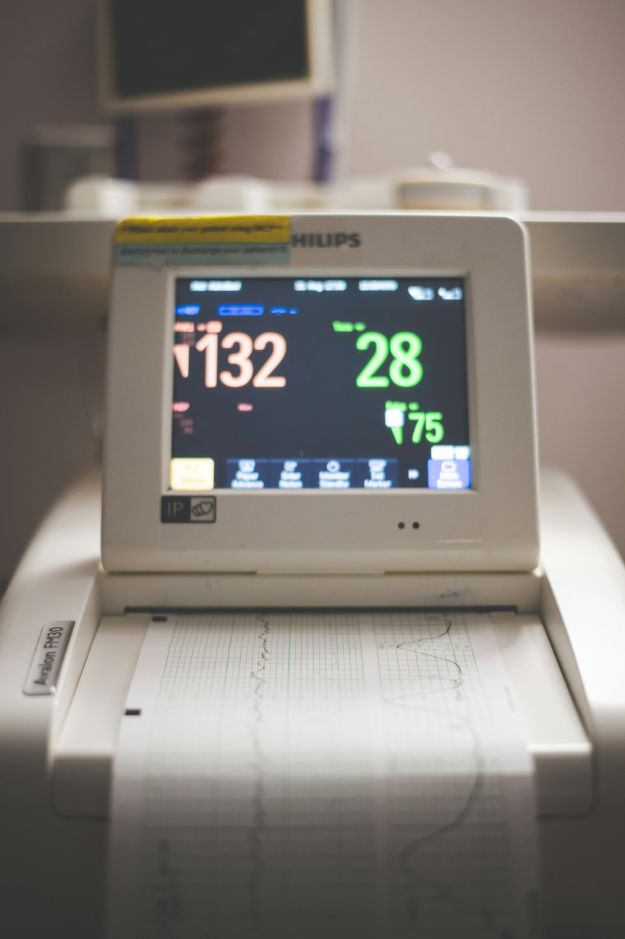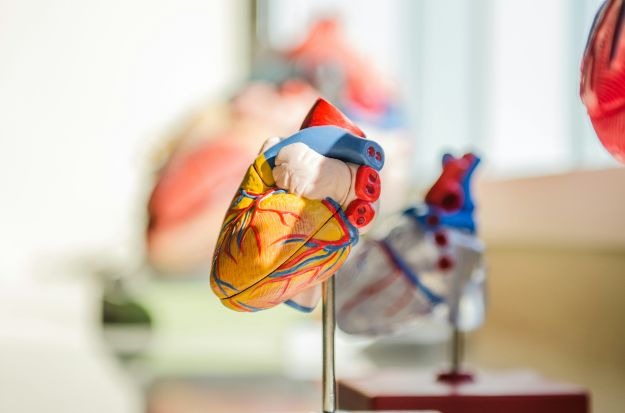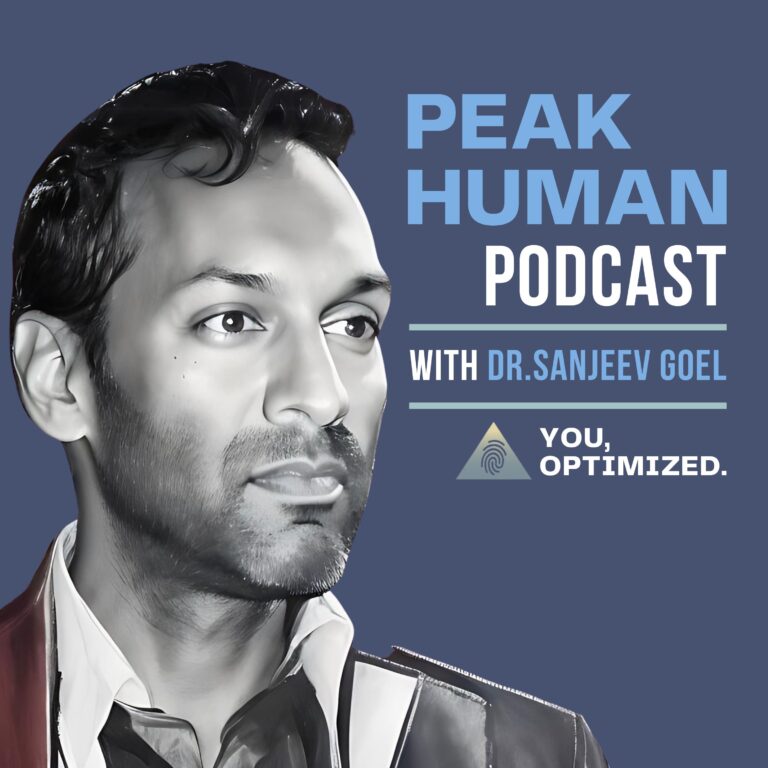Heart Rate Variability (HRV) stands as a crucial indicator of the autonomic nervous system’s efficiency, reflecting the intricate balance between our stress responses and restorative states.
By measuring the minute variations in time intervals between heartbeats, HRV provides a unique window into our body’s adaptive capabilities to both internal and external stressors. This measure goes beyond mere heart rate, delving into the dynamics of our physiological resilience and flexibility.
As we discover more about HRV, we uncover its significance not just in cardiovascular health but as a holistic marker of well-being, opening avenues for enhanced stress management and recovery strategies.
What Is Heart Rate Variability?
![]()
Defining HRV: A Marker of Autonomic Nervous System Health
Heart Rate Variability (HRV) refers to the variation in time intervals between consecutive heartbeats, measured in milliseconds. This variability is believed to be a vital sign of the autonomic nervous system’s (ANS) ability to regulate heart rate in response to internal and external stressors.
The ANS operates through two primary branches: the sympathetic nervous system, which stimulates the body’s “fight or flight” responses, and the parasympathetic nervous system, which promotes “rest and digest” activities.
HRV is a reflection of the dynamic interplay between these two systems. Rather than a steady, unchanging rhythm, a healthy heart adjusts its rate with each beat, responding to various physiological demands and environmental stressors. This variability is a sign of the heart’s and, by extension, the body’s flexibility and ability to adapt efficiently.
Why HRV Matters: Insights into Stress and Recovery
High HRV indicates a strong, adaptable ANS with a balanced sympathetic and parasympathetic response. It signifies that the body can rapidly shift from a state of stress and arousal to relaxation and recovery. Conversely, low HRV suggests a dominance of one system over the other, which can be a marker of stress, poor cardiovascular health, or other underlying issues.
Measuring HRV grants us insights into this balance and the overall health of the ANS, providing valuable information for managing stress, enhancing wellbeing, and preventing disease.
Heart Rate Variability (HRV) Measurement
Tools for Tracking HRV
The tools for tracking Heart Rate Variability (HRV) spans from consumer-grade wearables, like smartwatches and fitness trackers, to clinical-grade devices, such as Electrocardiogram (ECG) monitors, each serving distinct use cases and varies in accuracy and application.
Wearable Tech
Smartwatches and fitness trackers are highly accessible and designed for everyday use, making HRV tracking convenient for the general public.
These use photoplethysmography (PPG), a method that measures the blood volume changes by detecting light reflected from the skin, to estimate heart rate and subsequently HRV. Their greatest advantage lies in user-friendliness and the ability to continuously monitor HRV over long periods.
However, the accuracy of wearables can be affected by various factors, including device placement, physical activity, and external light interference, potentially leading to less precise HRV measurements compared to clinical tools.
Clinical-Grade Devices
Electrocardiogram (ECG) monitors, used in medical settings, are the gold standard for HRV measurement. They record the heart’s electrical activity using electrodes placed on the skin, providing highly accurate and reliable data.
ECG monitors capture the intricate details of each heartbeat, making them invaluable for diagnosing and monitoring cardiac conditions. However, they’re not made for the layman as their use is generally confined to clinical environments due to their complexity, cost, and the need for professional oversight.
Accurate HRV Measurement
For accurate Heart Rate Variability (HRV) readings, it’s important to measure it the same way each time. Think of HRV as a snapshot of how well your body handles stress and rest. But, just like taking a photo, the background matters a lot. Here’s what you need to keep in mind:
Consistent Conditions
Imagine if you took a photo in different lighting each time; it would be hard to compare them, right? The same goes for HRV. Things like the time of day, whether you’ve exercised, or even if you’ve had coffee can change your HRV. So, it’s best to measure it under the same conditions every time to get a clear picture.
Morning Measurements
Taking your HRV reading first thing in the morning, before you get out of bed, is like taking a photo with the perfect lighting. It gives you a clear, consistent backdrop. This way, your reading won’t be affected by the day’s stress or activities.
Resting State
It’s best to measure your HRV when you’re calm and haven’t been moving around much. This is like making sure your camera is steady when taking a photo – it ensures the result is clear and useful.
By keeping these tips in mind, you’ll get HRV readings that truly reflect how your body is doing, making it easier to see changes over time.
HRV in Health and Disease
HRV as a Health Barometer: Stress, Recovery, and Well-being
Heart Rate Variability (HRV) serves as a powerful indicator of your body’s ability to manage stress and recover. It’s like a personal stress meter, showing how well you bounce back from life’s pressures. When your HRV is high, it means your body is good at switching from a stressed state to a relaxed one. This adaptability is crucial for handling daily stressors without letting them wear you down.
By keeping an eye on your HRV, you can start to see patterns. Maybe your HRV dips when work gets hectic or after a poor night’s sleep. Recognizing these trends can help you figure out what stresses you out and how to adjust. For example, you might find that yoga, meditation, or just taking a walk helps your HRV go back up, indicating you’re recovering well.
HRV and Cardiovascular Health: Predicting and Preventing Issues
When it comes to your heart’s health, HRV is like a crystal ball. Studies show that a higher HRV is often linked to a healthier heart. This is because a flexible heart rate, which HRV measures, is a sign of a balanced autonomic nervous system. This balance is key in protecting against heart problems.
Research has found that people with higher HRV tend to have a lower risk of developing heart diseases. This doesn’t mean HRV can predict heart issues with certainty, but it’s a helpful clue.
While higher Heart Rate Variability (HRV) is generally linked to better cardiovascular health, it’s not always a case of “the higher, the better.” HRV showcases the heart’s adaptability under the influence of the autonomic nervous system.
In healthy individuals, a higher HRV signifies a balanced system capable of efficiently managing stress. However, exceptionally high HRV levels could indicate an overactive parasympathetic response, leading the body into an overly relaxed state. This might result in low blood pressure, fatigue, and sluggishness due to an imbalance where the “rest and digest” activities dominate over the necessary “fight or flight” responses.
If you notice something unusual, consult your doctor.
By monitoring your HRV, you might catch early signs that your heart health could be better. This early warning gives you a chance to make lifestyle changes, like improving your diet, exercising more, or managing stress, to help keep your heart in good shape.
Making HRV a Part of Your Wellness Toolkit
Incorporating Heart Rate Variability (HRV) monitoring into your wellness routine can offer valuable insights for otherwise healthy individuals, aiding in optimizing stress management, recovery, and overall well-being. It’s not exclusively for professionals; with the advent of consumer-grade wearables, HRV tracking has become accessible to the general public. However, this democratization of HRV monitoring comes with considerations:
Value in Holistic Health
HRV provides a window into the autonomic nervous system’s functioning, reflecting how well your body copes with stress and recovers. This can be particularly valuable in a holistic approach to health, enabling individuals to see the effects of lifestyle changes—like exercise, meditation, and diet—on their physiological stress and recovery states. It encourages a proactive stance towards health, emphasizing prevention and self-awareness.
Risks of Self-Monitoring
While HRV can be a useful tool, self-monitoring without proper knowledge can lead to misinterpretation of data. HRV is influenced by a myriad of factors including sleep, physical activity, and mental stress. Without a comprehensive understanding, there’s a risk of overemphasizing HRV scores or misinterpreting daily fluctuations as health issues, potentially leading to unnecessary anxiety or false self-diagnoses.
Professional Guidance
Consulting healthcare professionals can enhance the benefits of HRV monitoring by providing a nuanced interpretation of the data within the context of your overall health. Professionals can help distinguish between normal variability and signs of potential health issues, ensuring that HRV is used effectively as part of a broader health assessment.
For healthy individuals, HRV monitoring can be a valuable addition to a wellness toolkit, offering insights into the body’s stress and recovery dynamics. However, it’s important to approach self-monitoring with caution, educating oneself about the complexities of HRV and, when needed, seeking professional guidance to interpret the data.
If you have questions about heart rate variations or using an ECG or wearable tech, contact us and learn more.
At Peak Human, our team of healthcare professionals helps you reach your ‘peak’ health with a custom whole-person approach. Using the most cutting-edge, science-backed biohacking and aesthetic tools available today, we help you achieve the highest physical/cognitive performance state, improving your overall quality of life.
Don’t hesitate to contact us for questions or to book an appointment. Get personalized support and insight from expert physicians.









